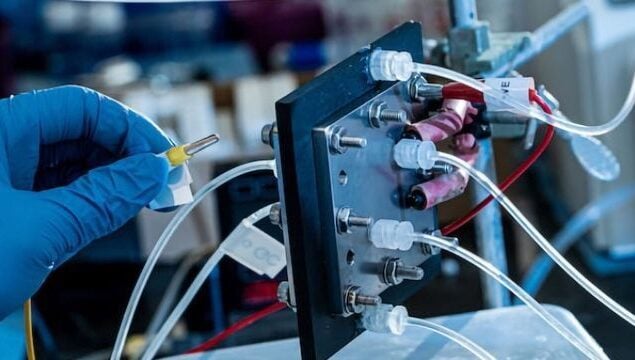Clearview AI got fined in the United Kingdom for illegally saving facial images
Clearview AI, a facial recognition business, has been fined more than £7.5...

Invention: Absorbs carbon dioxide during charging
Cambridge: Scientists have developed a battery-like device that emits carbon dioxide around it during the charging process.
Developed by researchers at the University of Cambridge, the supercapacitor is the size of a five rupee coin and can be made from low-cost durable materials such as coconut shells and seawater.
It is hoped that this invention will be used to make carbon extraction technologies more efficient.
Current technology that separates carbon from the atmosphere requires a large amount of energy and costs a lot of money.
This supercapacitor is similar to a rechargeable battery, but it relies on the movement of electrons between the electrodes instead of using chemical reactions to store and release the charge.
It is made up of two electrodes, one with a positive charge and the other with a negative charge.
Researchers in a number of experiments dropped the voltage from positive to negative plates at intervals, suggesting that this could lead to higher levels of carbon dioxide.
After which carbon dioxide can be collected and reused or disposed of.
According to Dr Alexander Force of the Department of Chemistry, and Yousef Hamid of Cambridge University, under whose guidance this research was conducted, these supercapacitors are potentially more efficient than current industry standards.
He said the charging-discharging process of this capacitor potentially uses less energy than the amine heating process used in the current industry.
Grace Mapstone, the co-author of the study, published in Nanoscale, said that these supercapacitors could not accumulate as much charge as batteries.
He added that the best thing about these supercapacitors is that the materials used to make them are cheap and available in large quantities.
“Researchers want to use items that are useless, that do not harm the environment, and that they need to be discarded,” he said. For example, carbon dioxide dissolves in the water-based electrolyte, which is actually seawater.
Researchers hope that this new device could further help in tackling climate change and provide an immediate solution to the problem of the 35 billion tons of carbon dioxide emitted into the atmosphere each year.
Catch all the Sci-Tech News, Breaking News Event and Latest News Updates on The BOL News
Download The BOL News App to get the Daily News Update & Follow us on Google News.